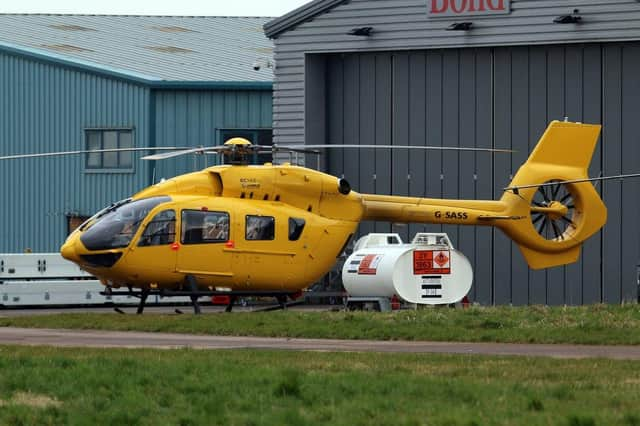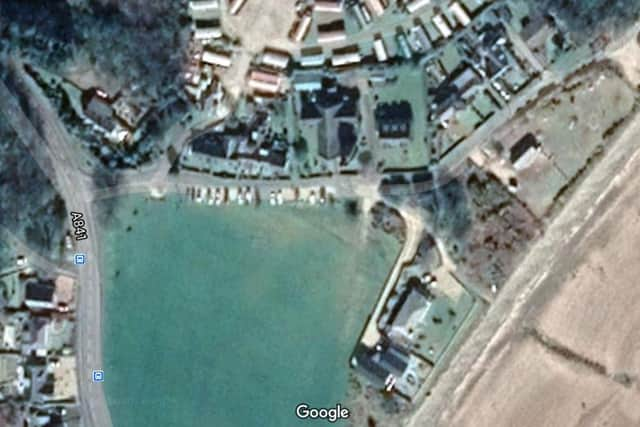Caravan roof lifted by air ambulance helicopter taking off on Arran


The incident happened as the air ambulance helicopter with two crew on board was lifting off from a sports field in Whiting Bay in the south of the island.
The UK Department for Transport’s air accidents investigation branch (AAIB) warned today: “The accident demonstrates the potential for downwash to cause damage during helicopter operations.”
Advertisement
Hide AdAdvertisement
Hide AdThere were no injuries in the incident at Sandbraes Park shortly before 1pm on 4 May as the patient was being taken to hospital.


The AAIB said the caravan was “close to, but not immediately next to the landing site”, which is also used by larger military and Coastguard helicopters.
Its report into the incident said: “The managers of the playing fields were unaware of any previous incidents associated with its use as a helicopter landing site.
The AAIB said the aircraft reached a height of 210ft – its “take-off decision point (TDP) – over the western edge of the landing site before it started to fly east.
Its report stated: “Witnesses report that as the helicopter increased power to transition away, part of the roof of a static caravan parked near the landing site to the west lifted, allowing some of the insulation underneath to be blown out.
"The position of the helicopter at the time it transitioned into forward flight, combined with the associated increase in applied power, resulted in sufficient downwash affecting the caravan roof to partially lift it.
"It was not possible to ascertain the condition of the roof before the incident and this may have been a contributing factor.
"The operator had also surveyed the site as part of its operating procedures and had not identified the caravans as being an issue.
Advertisement
Hide AdAdvertisement
Hide Ad"As a result of the incident, it was however able to adjust the TDP to a lower height [than 210ft] to reduce the area affected by downwash for future flights.
"It is important operators remain aware of the potential for damage that may be caused beyond the landing site and ensure their procedures and choice of location take this into account.”
A message from the Editor:
Thank you for reading this story on our website.
While I have your attention, I also have an important request to make of you.
With the coronavirus lockdown having a major impact on many of our advertisers - and consequently the revenue we receive - we are more reliant than ever on you taking out a digital subscription.
Subscribe to scotsman.com and enjoy unlimited access to Scottish news and information online and on our app.
With a digital subscription, you can read more than 5 articles, see fewer ads, enjoy faster load times, and get access to exclusive newsletters and content.
Visit https://www.scotsman.com/subscriptions now to sign up.
Our journalism costs money and we rely on advertising, print and digital revenues to help to support them.
By supporting us, we are able to support you in providing trusted, fact-checked content for this website.
Joy Yates
Editorial Director
Comments
Want to join the conversation? Please or to comment on this article.